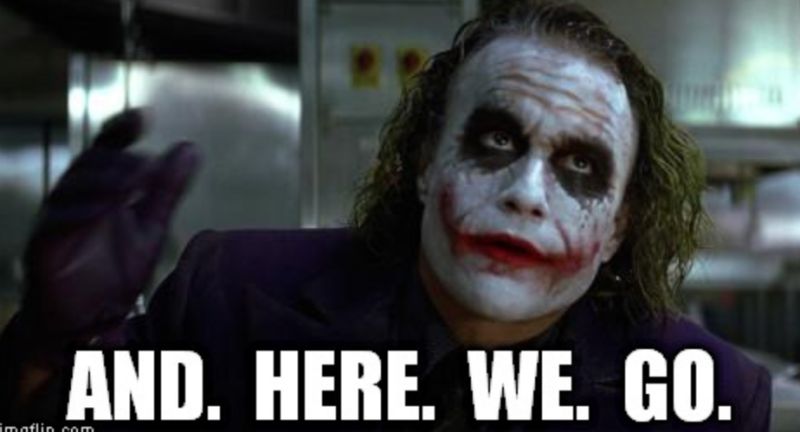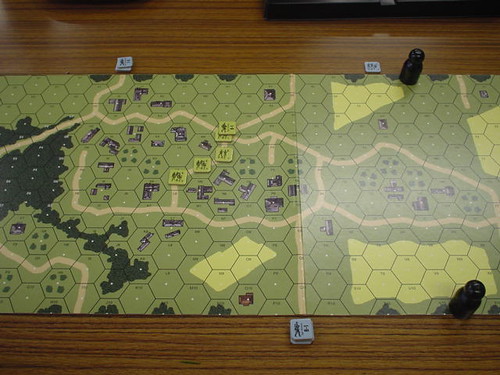Wargaming as Professional Development in the Canadian Army – The Presentation

By David Garvin
In a previous article here on No Dice, No Glory, I noted my plan to deliver a professional development seminar for my fellow officers at the 5th Canadian Division Support Base in Gagetown, New Brunswick, Canada. In that article, I outlined the method to my madness and the purpose of this article is not to talk about that which was presented, but rather to talk about my preparation and delivery and then to discuss the reception. In the words of the Joker, Here we go!

I arrived in Gagetown late on a Tuesday for my presentation on Thursday. Wednesday was a productive day for me for getting some much needed work done (including going to the gym, albeit not at 6:30 as I had originally planned), and I was able to complete all my background preparations, helped by some great assistance of the Signal Squadron. The booking in the presentation room was confirmed and all the IT assets were checked and re-checked. I was even able to rehearse my presentation on Thursday Morning, which helped my confidence. Although I am a confident public speaker, I get stage fright every time. When I rehearse, I will often find minor errors and this time was no different. I was set and was able to visualize the task ahead of me.

The preparation was complete, to include logging into the streaming server. I was able to confirm the successful receipt of the presentation by the so-called “out stations”. As an aside the Support Group has elements all across Atlantic Canada. I also had a small portion of my wargame collection set up at the head table behind me. It was a wide-variety of games, from Risk to Starship Troopers to a series of games focused on the battles around Smolensk in 1941. Of course, the idea was to set up a “Petting Zoo” of sorts. My final preparation was to go the bar in the mess and get a pint – a proper 20 ounce Imperial pint, of course. As I told one of my fellow officers, “We are civilized, after all!”
My Commander introduced me to the assembled officers of the Support Group and then it was over to me. I started the presentation by challenging the room to define what a wargame was. I had some good answers that allowed me to get to my first key lesson: wargames allow for experimentation, innovation and they do so in a safe-to-fail environment. This was a lesson I kept coming back to, and as stated, I’m not going to just go over my presentation here, but more on its effect. And the one effect I got in my hour-long presentation was that I was able to keep interest up throughout, with a bit of appropriate humour mixed in. But it was the finale that was the best part, as far as I was concerned.

As I had previewed in my previous article, I had an interactive portion prepared. After outlining some key information on the terrain and forces involved, I outlined what the goals of the US and of the Germans. And with that, I gave the members there their marching orders, along with printed maps of the scenario. I gave the group ten minutes to complete their task, done in groups of five or so each. I went around, making myself available for clarification if required. I
t turns out that I didn’t need to do so. All those in attendance were engaged and discussing options with one another. And when the ten minutes was up, I solicited two plans from the audience. One group had a platoon of Germans set up in a blocking position to delay the reinforcing Americans, allowing for the other platoons to engage the objective area. The second group had the two initial German platoons to both force their way into the objective, with a view to overwhelm the defenders, correctly discerning that they would have two turns at least before the reinforcing Americans could arrive.

The Feedback from this session, that lasted about an hour, was universally positive. I had to remember that for many, this was their first encounter with war games. The banter, the engagement and the comments that followed the presentation made it all worth it. Ideally, as the Commander pointed out in his concluding comments, the members of the Support Group would take the lesson home that by engaging in war games, we are practicing for war. He challenged us all to continue to engage with games and I ensured that I made myself available to provide any suggestions or guidance as required.
To top things off, I had a copy of Advanced Squad Leader Starter Kit 1 to give away. It turned out that two officers wanted a copy. So, in true gamer form, they diced for it. The loser? He asked for a vendor and of course, I was only too happy to point him to a site to get a copy. Mission Accomplished! In fact, I had people coming up to me the next day, and many suggested that the session I delivered was the most engaging they sat through. Hopefully the message that war gaming is a tool for the profession of arms takes hold. I’m optimistic that it will.
David Garvin is an officer in the Canadian Army and an avid war gamer. He is slowly making inroads in his efforts to make hobby war gaming a hobby for the professional soldier.

Great article as always.
Found a great video on the use of wargames in the French army (in French though) made by the French Army Ministry : https://www.youtube.com/watch?v=iY71WC-e9I4